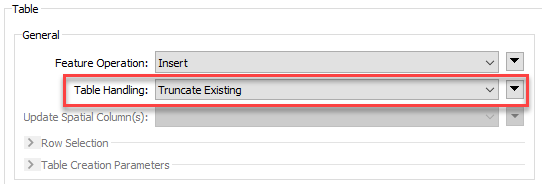So, the workflow is as follows.
I managed to download a folder from a URL-adress and to unzip it. Next step is where I got stuck. I want to remove all record in my feature class (ArcSDE-database) and then I want to append the same feature class with the records from the shapefile that I downloaded. Anyone got any tips on which transformers to use?
Super thankful for your help.




 Worth noting, since you want to append the shapefile to an existing table, you could also just inset the shapefile data into the existing table instead of truncating (unless you are updating the existing features at the same time). Take a look at the
Worth noting, since you want to append the shapefile to an existing table, you could also just inset the shapefile data into the existing table instead of truncating (unless you are updating the existing features at the same time). Take a look at the 




